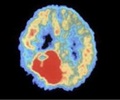FAQs on TORCH Syndrome: A Silent Threat to Your Pregnancy
1. Which specialist doctor to consult for TORCH Syndrome?Consult a Maternal-Fetal Medicine specialist or an Obstetrician/Gynecologist for prenatal care and management.
2. What does a positive TORCH mean?
A positive TORCH result indicates exposure to one or more infections during pregnancy, which can potentially affect the fetus.
3. Is TORCH infection an STD?
TORCH infections are not exclusively sexually transmitted. They can be acquired through various means, including contact with infected individuals, ingestion of contaminated food or water, or from animals.
4. What is the indication of the torch test?
The TORCH test is indicated during pregnancy to screen for infections that can affect the fetus, helping to diagnose and manage potential risks to maternal and fetal health.
5. What is the normal range of TORCH tests?
There is no "normal range" for TORCH tests. Results are interpreted based on antibody levels or detection of pathogens to assess potential risks to the fetus.
6. Which TORCH infections can be prevented?
Rubella and varicella infections can be prevented through vaccination before pregnancy, reducing the risk of congenital rubella syndrome and varicella-related complications in infants.
7. Can TORCH infections harm the baby?
Yes, TORCH infections can lead to severe fetal complications, including developmental abnormalities, organ damage, and even fetal demise.
8. When are TORCH tests performed during pregnancy?
TORCH tests are typically performed during prenatal care, especially if there's a risk of maternal infection or exposure to infectious agents.
9. Are TORCH infections treatable?
Treatment depends on the specific infection. Some TORCH infections, like syphilis and toxoplasmosis, can be treated with antibiotics or anti-parasitic medications.
10. Can TORCH infections be detected before birth?
Yes, TORCH infections can be detected through prenatal screening tests, such as serological assays or PCR on amniotic fluid.
11. What are the symptoms of TORCH syndrome in newborns?
Symptoms may include jaundice, hepatosplenomegaly, microcephaly, developmental delays, and organ abnormalities.
12. Can TORCH infections affect future pregnancies?
Yes, certain TORCH infections like CMV and toxoplasmosis can lead to chronic infections, potentially affecting future pregnancies.
13. How can TORCH infections be prevented during pregnancy?
Practicing good hygiene, avoiding contact with potentially infectious agents, and ensuring immunity through vaccination can help prevent TORCH infections during pregnancy.
14. Can TORCH infections be transmitted through breast milk?
Yes, some TORCH infections, such as CMV and toxoplasmosis, can be transmitted through breast milk. However, the benefits of breastfeeding usually outweigh the risks.
15. What are the long-term effects of TORCH infections in children?
Long-term effects may include developmental delays, intellectual disabilities, sensory impairments, and chronic health issues.
16. Is TORCH syndrome curable?
There is no specific cure for TORCH syndrome, but early detection, prenatal care, and appropriate management can improve outcomes for affected infants.
17. Can TORCH infections be passed through the placenta?
Yes, TORCH infections can cross the placenta from the mother to the fetus, leading to fetal infection and potential complications.
18. How common are TORCH infections?
TORCH infections are relatively uncommon but can have significant consequences when they occur during pregnancy.
19. Can TORCH tests be performed after birth?
Yes, TORCH tests can be performed on newborns if there's a suspicion of infection or if the mother tested positive for TORCH during pregnancy.
20. Are TORCH infections contagious?
TORCH infections are not typically contagious between individuals, except for certain infections like CMV and HSV, which can be transmitted through close contact or bodily fluids.










